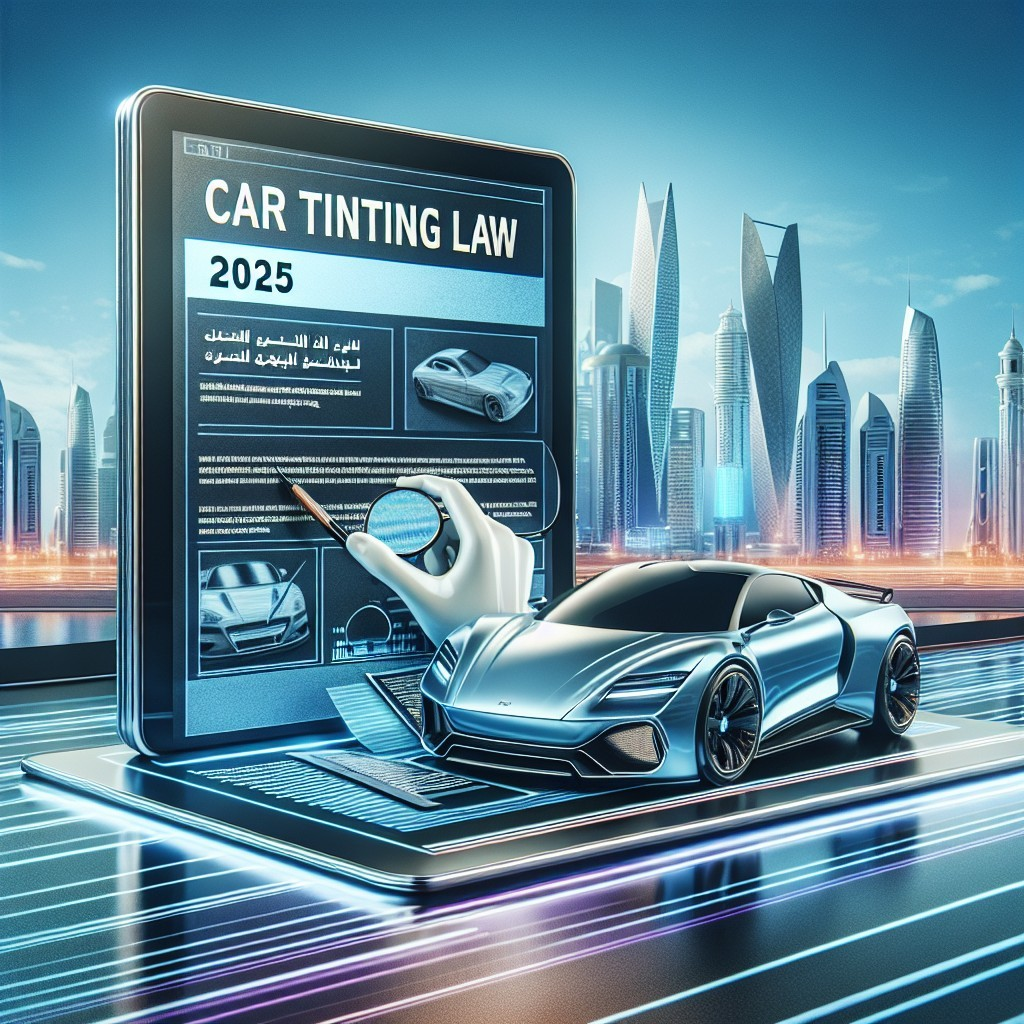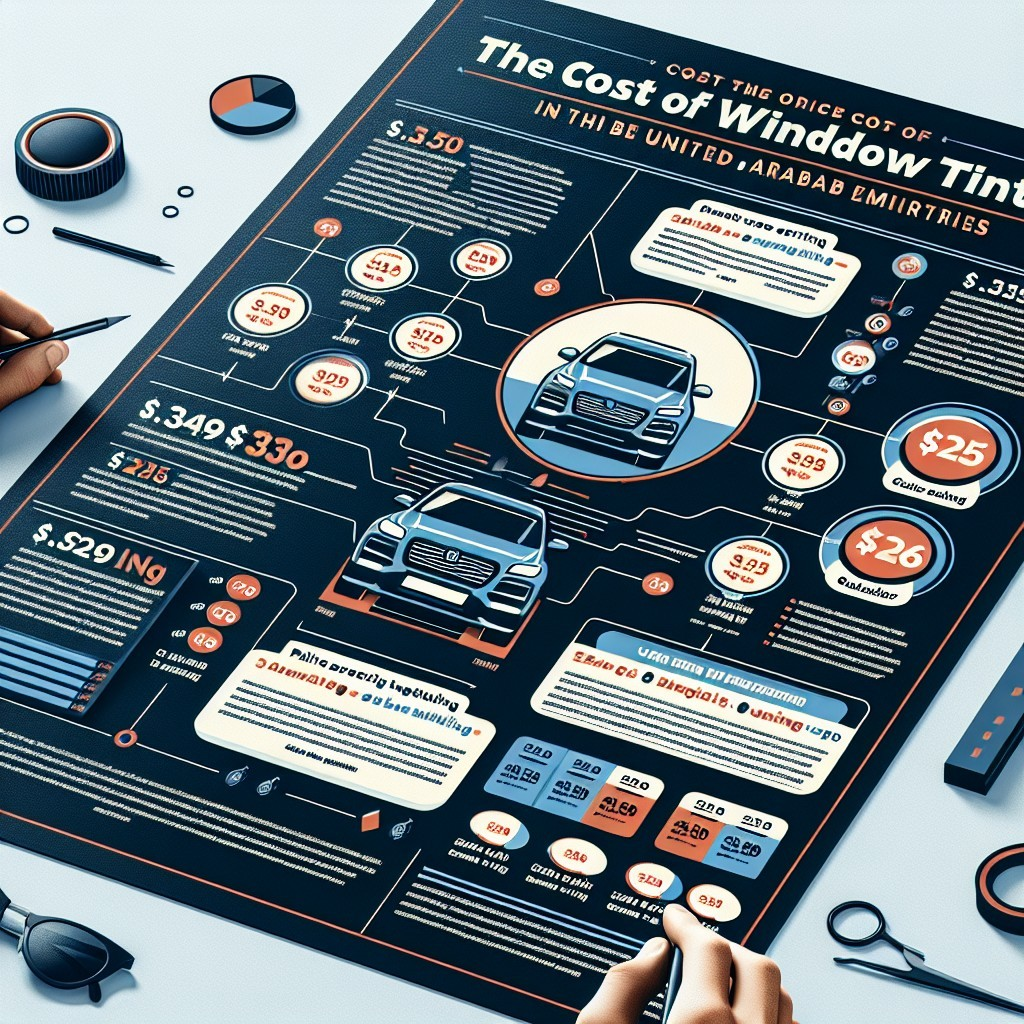As we step into 2025, car enthusiasts and everyday drivers alike are keenly aware of the importance of aesthetics, comfort, and compliance with local regulations when it comes to vehicle modifications. One of the most popular enhancements is window tinting. However, the laws surrounding car tinting in the United Arab Emirates (UAE) can be a complex web of rules and restrictions. Here’s a detailed breakdown of what’s legal and what isn’t when it comes to car tinting in the UAE in 2025.
The Importance of Tinting Regulations
Window tinting serves several purposes, including increasing privacy, enhancing the vehicle’s interior, and protecting passengers from harmful UV rays. However, improper tinting can lead to safety concerns and legal repercussions. The UAE has established strict regulations to ensure that all vehicles maintain road safety standards while allowing for some level of customization.
Current Tinting Laws in the UAE
As of 2025, here are the key regulations regarding car tinting in the UAE:
- Front Windshield: The front windshield is required to have a minimum visible light transmission (VLT) of 70%. This means that at least 70% of the light must be able to pass through the glass.
- Front Side Windows: Similar to the windshield, front side windows must also allow 70% of visible light to pass through.
- Rear Windows: There are no restrictions on the tinting of rear windows, which means you can choose any level of tint you desire. This applies to both the rear sides and the back window.
- Reflectivity: The laws also stipulate that the reflectivity of the tint should not exceed 30%. This applies to all windows, ensuring that the tint does not contribute to glare or obstruct visibility for other drivers.
- Colors: Only specific colors of tint are permitted. Generally, darker shades such as black or dark gray are allowed, while reflective or colored tints are typically prohibited.
Exceptions and Special Cases
While the regulations are clear, there are exceptions. For instance, vehicles belonging to certain government entities or those used for specific purposes, such as transport for VIPs, may have different tinting allowances. Furthermore, medical exemptions can apply for individuals who have health conditions that require additional sun protection.
The Consequences of Non-Compliance
Failure to adhere to the tinting laws can result in hefty fines, the impounding of the vehicle, or even a mandatory removal of the tint; In some emirates, authorities may implement roadside checks to ensure compliance, especially during major events or festivals.
Future Trends in Tinting Regulations
As the UAE continues to evolve, so too may its regulations regarding vehicle modifications. There’s a growing trend towards sustainability and eco-friendliness, which may influence future changes in the law. Innovations in window tint technology, such as ceramic tints that offer UV protection without compromising visibility, could lead to more lenient rules in the future.
As we navigate the landscape of car tinting laws in the UAE in 2025, it’s crucial for vehicle owners to stay informed and ensure compliance to avoid any legal issues. Whether you’re looking to enhance your vehicle’s look or protect yourself from the sun, understanding these regulations will help you make informed decisions. Always consult with authorized tinting professionals to ensure that your vehicle meets all legal requirements while achieving the aesthetic you desire.
Stay safe and stylish on the roads of the UAE!
As we look to the future of car tinting regulations in the UAE, it’s essential to consider not just what the laws are but how they may evolve in response to technological advancements and societal changes. The growing emphasis on sustainability and public safety will likely play a crucial role in shaping new regulations.
Technological Innovations and Their Impact
In recent years, advancements in window tint technology have introduced a range of products that offer enhanced UV protection without compromising visibility. Ceramic and nano-technology tints are becoming increasingly popular as they provide superior heat rejection and UV blocking capabilities while maintaining a transparent appearance. These innovations may encourage regulatory bodies to reconsider existing laws, potentially allowing for darker tints that still ensure driver and passenger safety.
Public Awareness and Safety Considerations
Public awareness campaigns focusing on the dangers of excessive window tinting have already made an impact. As more drivers become educated about the risks associated with poor visibility, there may be a push for stricter enforcement of existing regulations. This could lead to a more nuanced approach where tinting laws differentiate between aesthetic choices and safety concerns, ensuring that both are adequately addressed.

Environmental Concerns and Sustainable Practices
With an increasing global focus on environmental sustainability, there is a potential for tinting regulations to incorporate eco-friendly practices. Future laws might incentivize the use of materials that are not only effective but also environmentally friendly, laying the groundwork for a new era of responsible tinting. For instance, regulations could require that window films be made from recyclable materials or have a reduced carbon footprint in their production.
The Role of the Community in Shaping Regulations
Engaging the community in discussions about car tinting laws can lead to more balanced regulations that reflect the needs and desires of the public. Local forums or surveys could provide valuable insights into how tinting impacts residents’ daily lives. Such initiatives can strengthen the relationship between regulatory bodies and the community, fostering an environment where laws are adapted based on collective feedback.
As we move through 2025 and beyond, the landscape of car tinting laws in the UAE will undoubtedly undergo significant changes. With the interplay of technology, public safety, and environmental consciousness, the future promises to be dynamic and multifaceted. For vehicle owners, staying informed and adaptable will be crucial in navigating this evolving regulatory environment, ensuring that both personal expression and compliance go hand in hand.
Whether you’re planning to tint your windows for aesthetic reasons or to enhance comfort and protection, understanding the context and future of these laws will empower you to make educated choices. The journey of car tinting in the UAE is just beginning, and it’s one that promises to be as thrilling as the drive itself.
As we step further into 2025, the landscape of car tinting laws in the UAE is not just a reflection of regulatory compliance; it also mirrors a cultural shift towards personal expression and technological innovation. The blend of aesthetic desires and functional needs is pushing both consumers and lawmakers to rethink what is acceptable when it comes to window tinting.
Consumer Trends and Preferences
Today’s consumers are increasingly aware of the benefits of car tinting beyond mere aesthetics. Many are drawn to tints that offer UV protection, heat reduction, and glare control, enhancing not just comfort but also safety on the roads. As awareness grows, so does the demand for transparency and education regarding the legalities surrounding tinting. Consumers are actively seeking out information, engaging in discussions, and advocating for regulations that allow for greater customization while ensuring safety and compliance.
The Role of Technology in Regulation
With advancements in technology, the car tinting industry is witnessing innovations that could lead to more flexible regulations. Smart window films, which can adjust their tint based on light exposure, are emerging as a game changer. Such technology could pave the way for future legislative amendments that recognize the dynamic capabilities of modern tint solutions while maintaining safety standards. As these technologies become more mainstream, lawmakers will face the challenge of integrating them into existing frameworks.
Global Influence on Local Laws
The UAE is not alone in navigating the intricacies of car tinting regulations. As globalization connects markets and cultures, local laws are increasingly influenced by international standards and practices. Countries with progressive tinting laws, such as those in parts of Europe and North America, may serve as models for the UAE. This could lead to discussions about harmonizing regulations, particularly for expatriates and international businesses operating within the UAE. The exchange of ideas and practices will be vital as the UAE continues to position itself as a global hub.
Public Engagement and Advocacy
In the past, regulatory changes were often top-down, with little input from the public. However, the tide is shifting. Community engagement is becoming a key component in shaping regulatory frameworks. Advocacy groups and car enthusiast organizations are taking the initiative to voice concerns and suggestions, emphasizing the importance of a balanced approach to tinting laws. This collaborative environment fosters trust between authorities and the public, ensuring that regulations reflect the needs and desires of the community.
Preparing for the Future: What Should Drivers Know?
For drivers looking to navigate the evolving landscape of car tinting laws in the UAE, staying informed is paramount. Here are some tips:
- Consult Experts: Always work with certified professionals who are familiar with the latest laws and regulations regarding car tinting.
- Stay Updated: Follow local news and updates from the relevant authorities to ensure compliance with any new regulations that may be introduced.
- Understand Your Rights: Be aware of your rights as a consumer and advocate for fair regulations that meet your needs.
- Embrace Technology: Consider investing in innovative tinting solutions that not only comply with regulations but also offer enhanced benefits.
The journey of car tinting laws in the UAE is a reflection of broader societal changes, technological advancements, and a growing demand for personal expression. As we move forward, the dialogue between consumers, industry leaders, and regulatory bodies will be crucial in shaping a future where car tinting can be both stylish and compliant. With the right balance, the UAE can lead the way in creating a regulatory environment that encourages innovation while prioritizing safety and community needs.
As the sun shines brightly over the UAE, so too does the potential for a new era in car tinting—one that promises to be as dynamic and vibrant as the region itself.


This piece is incredibly useful! Understanding the legal aspects of car modifications is essential, and this article does a great job of outlining what we need to know.
The clarity of this article is impressive! It simplifies a complex topic and makes it accessible. I now feel more confident about my choices regarding window tinting.
This article provides an excellent overview of the car tinting laws in the UAE. It’s informative and easy to understand, a must-read for anyone considering tinting their vehicle!
I appreciate the detailed breakdown of the regulations. It’s crucial for drivers to be aware of these laws to avoid any legal issues. Great job!
Fantastic guide on window tinting regulations in the UAE! The specifics about VLT and reflectivity are particularly helpful for anyone looking to modify their car legally.